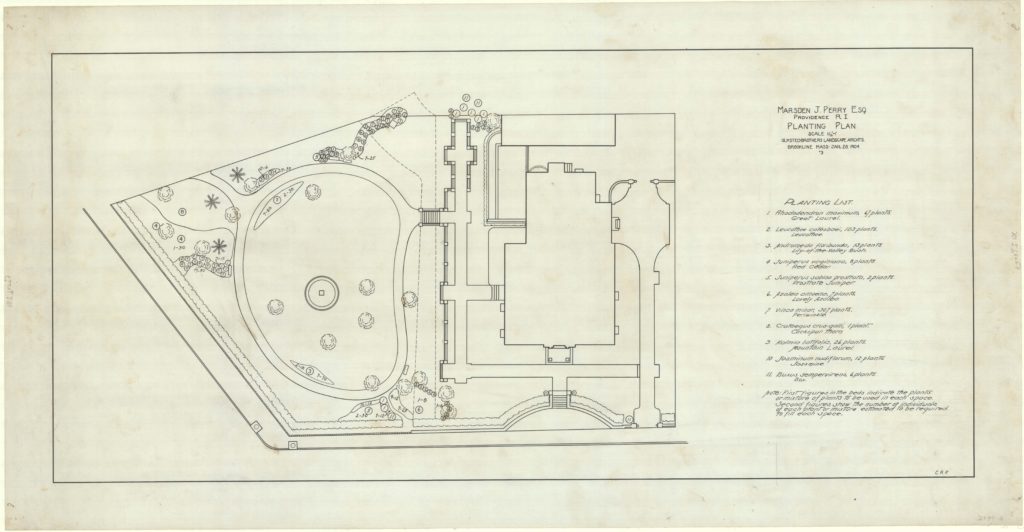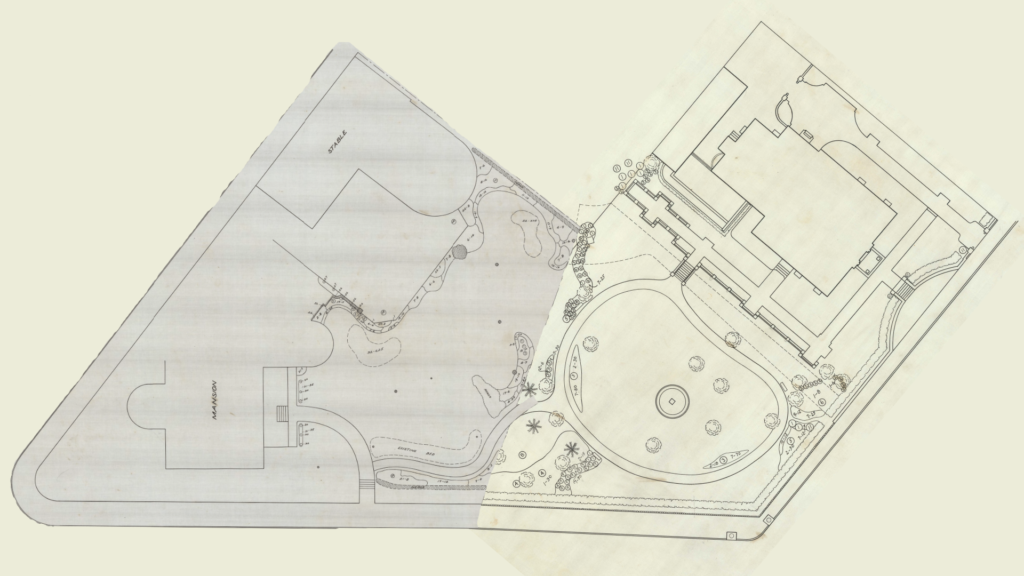
History of the Property
The home on this property was originally built for Rhode Island merchant John Brown, the wealthiest man in Providence after the American Revolution. Brown was best known for his role as an ardent patriot and his participation in the slave trade and China trade.
John Brown’s grand, brick mansion was the first home atop historic College Hill. This site gave him a sweeping view of his ships coming and going to places like Indonesia, China, South America, the West Indies, and the West Coast of Africa. He was clear in his determination that this would be the best house in Rhode Island, and its location matched its elegant design. Known by its eponymous title almost immediately, the John Brown House (JBH) was visited and remarked upon by the first presidents and first ladies of the United States, and John Brown’s peers in the U.S. Congress.
The JBH stayed in family hands until 1899 when Marsden Perry, a Providence business tycoon, purchased the grand manse he had been eyeing for decades.
Perry, a farmer’s son, moved to Providence in the second half of the 19th century. By the 1890s, he was the partial owner of the gas company, the electric company, the Providence Journal, the Providence Trolley Company, and the Bank of Providence. Perry updated the house, but his plans transcended the home. It was the garden and grounds where Perry displayed his Gilded Age sensibilities and his own prominence to the community around him.
The Landscape

In 1902, Perry hired the Olmsted Brothers firm of Boston to design the southwest parcel of the current property. He said he wanted an urban oasis; his very own Central Park, in miniature. The Olmsted plan highlighted the existing elm tree grove, adding a curvilinear circulating path with a fountain in the middle, and included heavy shrubbery inside a picket fence with thick plantings on the slopes of the terrace created to highlight the setting of the house. Soon after, Perry purchased the adjacent property and razed the structures to expand his landscape. His garden staff planted the area, but there is no known record of any design for that part of the lawn.

When the property changed hands in the middle of the 20th century, going first to John Nicholas Brown and then to the RIHS, most of the ground plantings were removed, as was the fountain. At some point, the circulator was replaced with a path leading to the terrace from the parking lot. This path was moved just over a decade ago to accommodate the installation of a geothermal well system, added in our major renovation supported by the National Endowment for the Humanities.
The changes in ownership and use have eradicated the original intent and character of the Olmsted plan. One of the consequences of this was an increasingly diffuse landscape plan and a surplus of elm trees; too many trees, it turns out, to survive the Dutch Elm blight in this cramped urban environment.
The Great Lawn faces historic Benefit Street, one of the first and best-preserved streetscapes in America. Benefit Street includes not only great cultural and heritage institutions like the RIHS, the Providence Athenaeum, and the Rhode Island School of Design Museum, but also the historic homes of people like the Civil War general Ambrose Burnside, signer of the Declaration of Independence Stephen Hopkins, and the poet Sarah Helen Whitman. The Great Lawn is not simply a yard, it is a jewel in a magnificent setting.
